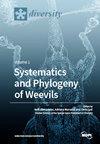Climate Change Impacts on Species Composition and Floristic Regions in Thailand
IF 2.1
3区 生物学
Q2 BIODIVERSITY CONSERVATION
引用次数: 0
Abstract
Tropical forests are vulnerable to climate change including increased temperatures and changes to rainfall variation. Here, we use Thailand as a case study for assessing the impacts of the shared socio-economic pathway and climate scenarios on changes to the distribution and extent of floristic regions. To address this question, we assigned floristic regions based on a structured cluster analysis of modeled species ranges, and evaluated how those regions respond under scenarios of climate change. A total of 201 plant species with sufficient occurrence data obtained from the systematic forest inventory plots across the country and global datasets were chosen for distribution modeling. Environmental variables, including soils, topography and bioclimatic variables were compiled to model both current and 2050 distributions. Potential floristic regions were classified using a clustering algorithm on the pixel-wise species compositions—resulting in 12 floristic regions representative of both current climate species compositions and projected future species assemblages. Five floristic regions are projected to experience little change in their geographic distribution, while the remainder are projected to be substantially displaced spatially. Additionally, two of the identified floristic regions are not well represented in protected areas—with less than 50% of the current geographic distribution in each region in some form of protected status.气候变化对泰国物种组成和区系区域的影响
热带森林容易受到气候变化的影响,包括气温升高和降雨变化。本文以泰国为例,评估了共同的社会经济路径和气候情景对植物区系分布和范围变化的影响。为了解决这个问题,我们基于模型物种范围的结构化聚类分析划分了植物区系区域,并评估了这些区域在气候变化情景下的响应。选取全国系统森林清查样地和全球数据集中有充分发生数据的201种植物进行分布建模。环境变量,包括土壤、地形和生物气候变量,被编译成当前和2050年的分布模型。利用聚类算法对潜在区系区域进行了分类,得到了12个既代表当前气候物种组成又代表未来预测物种组合的区系区域。预计有5个植物区系的地理分布变化不大,而其余的植物区系在空间上将发生很大的变化。此外,有两个已确定的植物区系在保护区中没有得到很好的体现——在每个区域中,只有不到50%的地理分布处于某种形式的保护状态。
本文章由计算机程序翻译,如有差异,请以英文原文为准。
求助全文
约1分钟内获得全文
求助全文
来源期刊

Diversity-Basel
Environmental Science-Ecological Modeling
CiteScore
3.40
自引率
12.50%
发文量
925
审稿时长
11 weeks
期刊介绍:
Diversity (ISSN 1424-2818) is an international and interdisciplinary journal of science concerning diversity concept and application, diversity assessment and diversity preservation. It is focused on organismic and molecular diversity. It publishes reviews, regular research papers and short notes in the regular issues. Related news and announcements are also published. Our aim is to encourage scientists to publish their experimental and theoretical results in as much detail as possible. Therefore, there is no restriction on the length of the papers. Full experimental details must be provided so that the results can be reproduced.
 求助内容:
求助内容: 应助结果提醒方式:
应助结果提醒方式:


